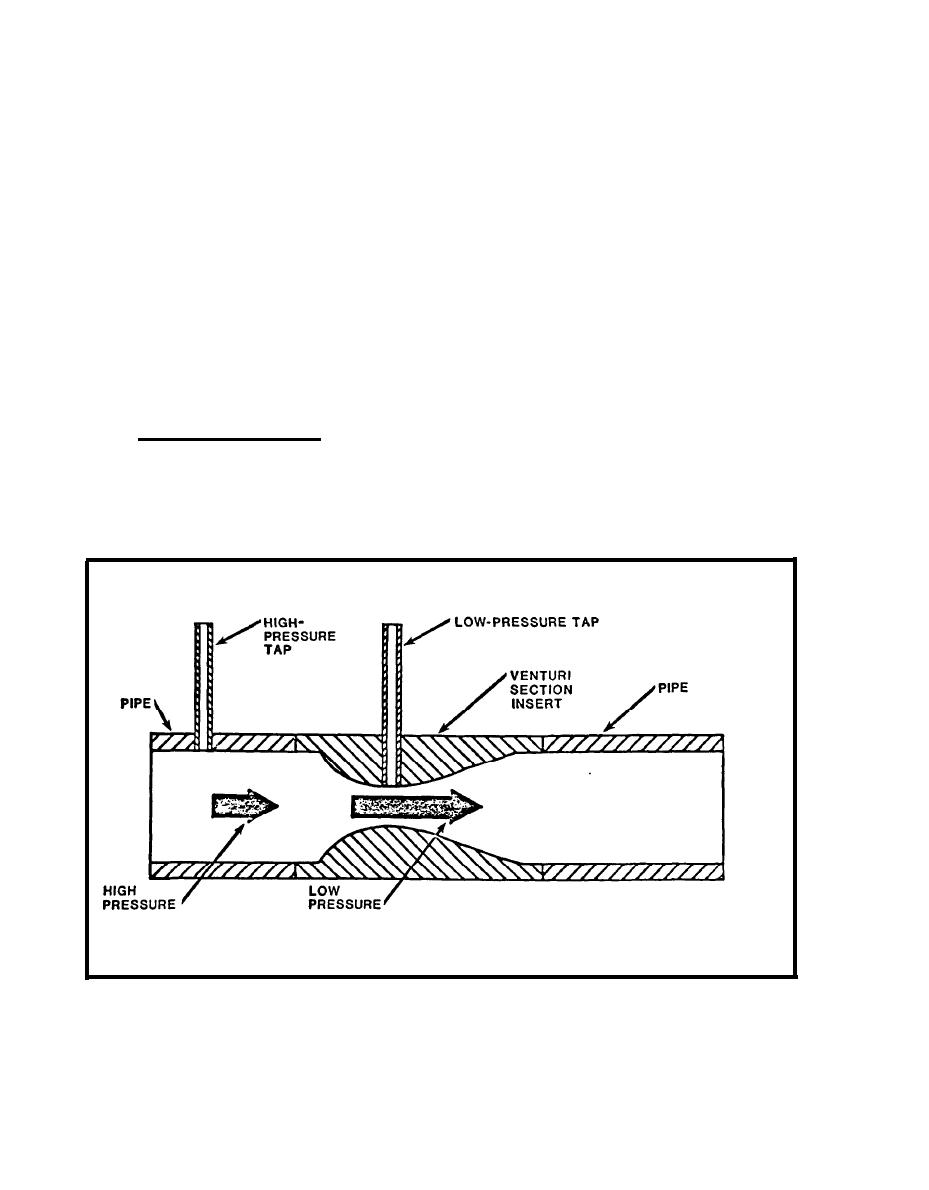

Custom Search
|
|

|
||
 Section 2.
VENTURI TUBES
1. INTRODUCTION. Venturi tubes are used to measure flow in pipes and ducts.
They can be applied to gases such as air and steam, and to liquids such as
water and oil. Common applications include airflow in large ducts and steam
output from boilers. Venturis are widely used, and a great deal of operating
experience has been gained in a variety of applications. They are relatively
easy to fabricate, consisting of a tube that gently converges to a low
diameter throat and diverges to the downstream pipe diameter (Figure S-ll).
If the cost of fluid delivery is high, venturis are desirable because they
have a low, permanent pressure loss and do not decrease the delivery rate.
Venturis have a low sensitivity to wear and are useful in erosive flows such
as air with suspended solids. Venturi meters are especially applicable to
large ducts , round or rectangular, where other types of flowmeters are
expensive to fabricate and calibrate.
1.1 Operating Principles. Venturi tubes are inferential meters that do not
measure flow directly, but cause differential pressure to occur. An inferred
flow rate can be calculated by measuring change in pressure and by knowing
proportional relationships. Figure 5-11 illustrates in a cutaway view, the
venturi and the areas of high and low pressures associated with their
respective velocities.
FIGURE 5-11.
Venturi Tube
5-15
|
 |
|
 |
||